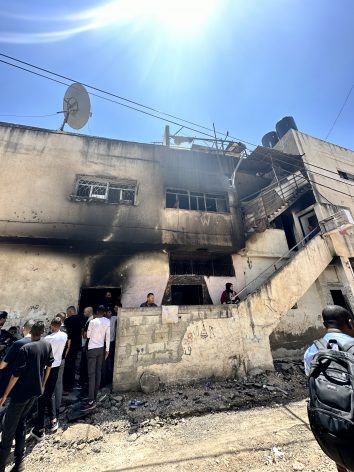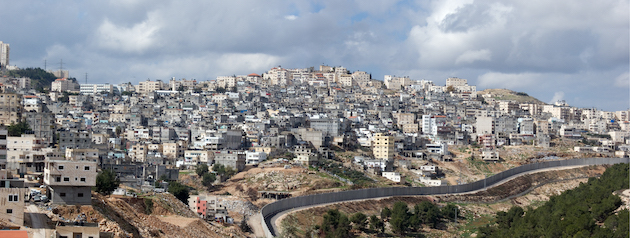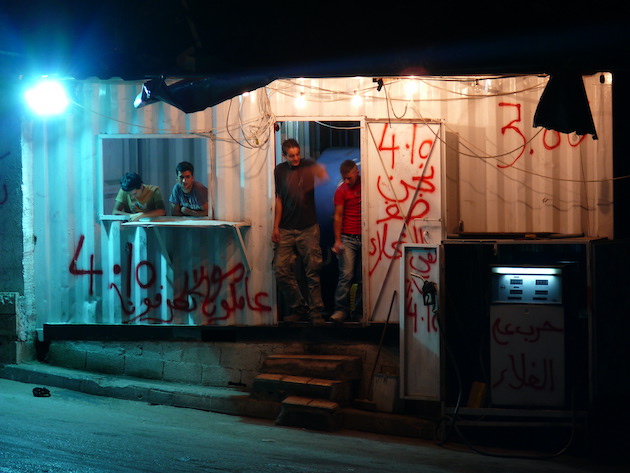International Inertia Follows Israeli Assault on Jenin in the West Bank

SYDNEY, Jul 28 (IPS) - The likelihood of further confrontations remains high following a major Israeli military assault on an impoverished camp of more than 23,500 Palestinian refugees in Jenin in the north of the occupied West Bank earlier this month. The landlocked Palestinian territory, located between Israel to the west and Jordan to the east, has been illegally occupied, according to international law, following the invasion by Israel 56 years ago.
“The destruction I saw was shocking. Some houses were completely burned down; cars had been crushed against walls …I saw the trauma in the eyes of camp residents who had witnessed the violence. I heard them speak about their exhaustion and fear,” Leni Stenseth, Deputy Commissioner-General of the United Nations Relief and Works Agency for Palestinian Refugees in the near East (UNRWA), stated after visiting Jenin on 9 July.
There have been numerous Israeli incursions into Jenin this year, and authorities claim the air and ground invasion on 3-5 July was to target Palestinian militant groups believed responsible for attacks on Israelis. Twelve Palestinians and one Israeli were killed, 900 homes damaged or destroyed, services decimated, and thousands displaced.
The military raid followed the death of four Israeli settlers by an armed Palestinian in the region in June. "Over the past hours, our security forces have been operating against terror hotspots in the city of Jenin," Israeli Defence Minister Yoav Gallant said on 3 July. Palestinian resistance groups have since strengthened their rhetoric. Israel intended "to kill any resistance, and they have failed in that 100 percent", a Jenin Brigades spokesperson told the international media. Both Israelis and Palestinians claim the West Bank as part of their homelands.
Palestinian armed resistance groups have grown in the region in response to Israel’s harsh military occupation. Most Palestinians in the West Bank are refugees living with chronic poverty, unemployment, human rights abuses, deprivation of civil liberties and statelessness. All of this is especially acute for youth in long-term displacement camps.
“I am not surprised at what happened in Jenin. After 30 years , there is no plan for them , no development and no political agreement. They are losing the future and losing hope,” Jawad Al Malhi, a Palestinian living in the West Bank, said in an interview with IPS.
The overcrowded Jenin camp, established in 1953, is home to three generations of Palestinians who were evicted from their home villages during the ‘Nakba’ of 1948. The ‘Nakba’ refers to the widespread dispossession of Palestinians of their traditional lands and villages during the formation of the Israeli state. It has a population density of 56,000 people per square kilometre.

In June, a United Nations special committee on Palestinian human rights in occupied territories reported that Palestinian fatalities at the hands of Israeli authorities in the West Bank in the first five months of this year had skyrocketed by 124 percent compared to the same period last year.
The Israel-Palestine conflict, in its 75th year, is one of the world’s longest. But the West Bank, which was governed by Jordan, became a battleground when Israel seized it and annexed East Jerusalem during the Six Day War in 1967. Successive Israeli governments have ignored condemnation of its occupation by the international community.
In further defiance, Israeli settlers have been encouraged to build permanent homes in the West Bank. And settler attacks on neighbouring Palestinian communities, involving physical assault and desecration of homes and property, have occurred with impunity for years. From 2020-2022, Israeli settler violence against Palestinians rose by 137 percent, reports the UN. The trend is unlikely to reverse following the election last year of a new hardline Israeli Government led by Prime Minister Benjamin Netanyahu, which has pledged to harden its hold on the West Bank.
The erosion of Palestinian rights and hope of the West Bank becoming the site of their future state has deepened the loss felt by those living in its many refugee camps. One of these is Shu’fat, a sprawling warren of congested buildings that are being built higher as each generation tries to live within its boundaries on the outskirts of Jerusalem. It was established as a refugee camp in 1965 and is now flanked on one side by the Israeli separation or ‘apartheid’ wall.
Jawad Al Malhi was born in Shu’fat after his family, who were evicted from their village, moved there in 1966. His home is a few hundred metres from the narrow checkpoint, manned by armed Israeli soldiers, which he and other residents are forced to negotiate daily to go to the shops, the hospital and access public services and schools for their children.
The challenges of life have only intensified with the rapid growth of Shu’fat’s population. “In the 1980s, there were about 10,000 people living in Shu’fat, but now there are 120,000 people here. So, you no longer see the light; you don’t see the sun because of the higher buildings. There is no space, and it is difficult to walk anywhere. There are no places for cars and no places for people,” Al Malhi described, adding that life in the camp “has definitely got a lot worse over the last decade.”

Now in his fifties, Jawad has spent most of his life making art about life in the camp and the human experience of occupation. And he has been a dedicated art teacher to children in the camp. He described a video he made in Shu’fat, called the ‘Gas Station’, which gave an insight into the lives of Palestinian youth today. The video records the lives of young men working in a small gas station on the camp’s margins. As the hours pass and the day turns to night, their interactions around a pre-fabricated cabin and petrol tank unfold in an endless cycle of waiting. Time changes, but crucially nothing else does.
“Among the younger generation, there is now more distrust and suspicion . Young people have a dream to leave the camp, but they can’t leave. It is very difficult for youths to build healthy social lives and relationships,” Al Malhi said. Unemployment among Palestinian youth is estimated at 30 percent.
Haneen Kinani of the Palestine Institute for Public Diplomacy in Brussels told IPS that most of the younger generation “have never seen life without siege, raids and a brutal Israeli military regime that dehumanises them.”
Evidence of growing discontent among younger Palestinians is fuelled by numerous factors, including the failure of the 1993 Oslo Peace Accords, the absence of any tangible peace process and the ineffectiveness of the Palestinian Authority, responsible for administering Palestinian-held areas of the West Bank, to address Israel’s actions.
“At present, there are no prospects of a political solution. The Israeli Government has no willingness to engage and has no policy beyond possible formal annexation of parts of the West Bank. At the same time, the Palestinian Authority is too weak to be able to negotiate anything,” John Strawson, a Law Professor at the University of East London, told IPS.
Some nations, such as the United Kingdom, Canada and Australia, have called for Israel to cease its aggressive settlement building, seen as a spur to violence. But commentators point to the unwavering support Israel receives from the United States as a major factor in its ongoing impunity.
Nasser Mashni, President of the Australia Palestine Advocacy Network, said it was time for this to change. “The UN and individual countries should be taking immediate and decisive action, as it has shown is possible with the Russian invasion of Ukraine. Israel must be subject to UN and international sanctions until it abides by and meets its obligations under international law,” he told IPS.
IPS UN Bureau Report
Follow @IPSNewsUNBureau
Follow IPS News UN Bureau on Instagram
© Inter Press Service (2023) — All Rights Reserved. Original source: Inter Press Service
 Global Issues
Global Issues